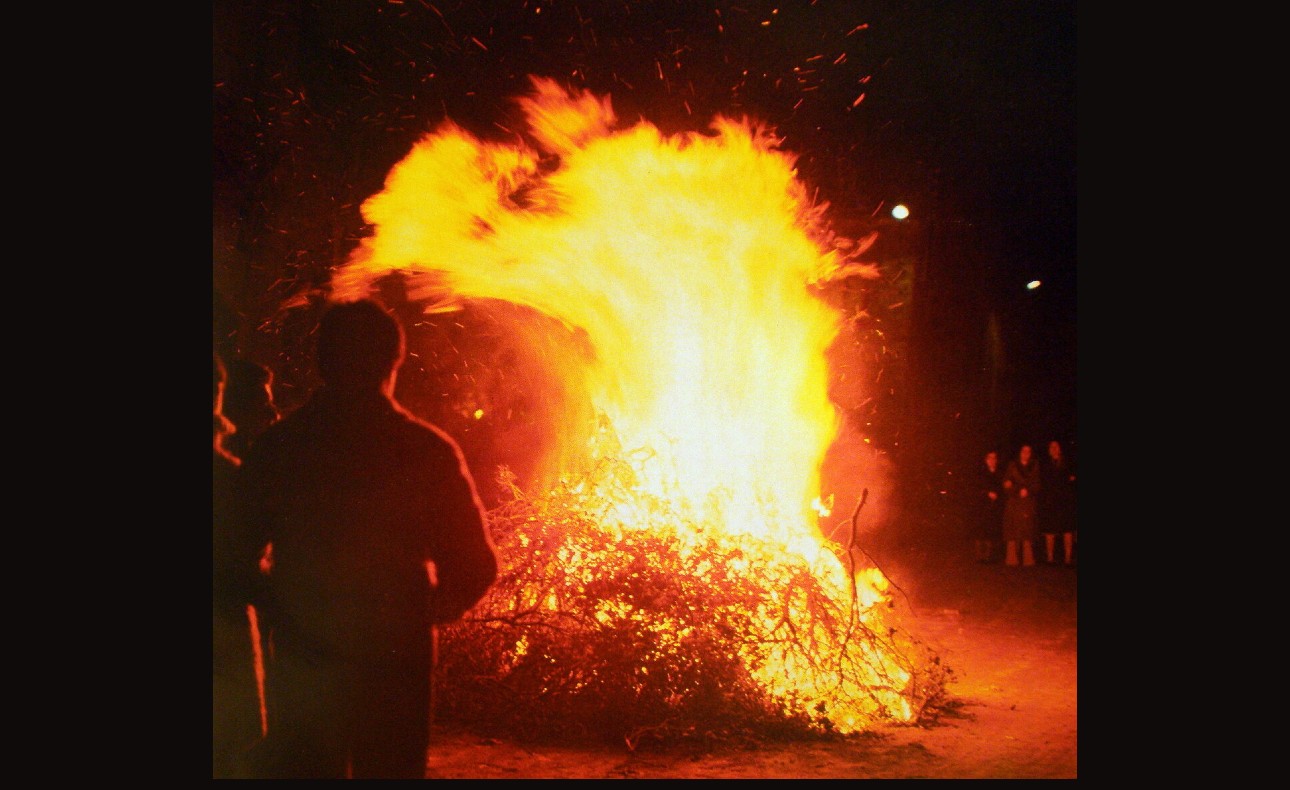
What is celebrated on the night of San Juan?
The festival that coincides with the beginning of Summer takes place the night before St. John's Day, and has pagan origins.
The night of Thursday, June 23 is perhaps the most anticipated night of the year for dozens of young Spaniards from the cities of the Mediterranean coast — Barcelona, Tarragona, Valencia, Alicante, and more — who have finished the school year and are looking forward to celebrating the arrival of Summer and vacations.
The night of June 23 to 24 is the so-called 'verbena de San Juan,' a celebration that traditionally features large bonfires, firecrackers and fireworks after an outdoor dinner, in which there is no lack of cava or the so-called coca de San Juan — a sweet cake covered with candied fruit and pine nuts. After dinner, young people or anyone who likes the night, flood the bars and dance in clubs and continue celebrating until dawn.
The origin of this festival goes back to pagan festivals that celebrated the Summer solstice. However, the Summer solstice takes place on the night of June 21, while St. John's Day falls on the night of the 23 to the 24. This difference likely has religious reasons, as it coincides to when St. John the Baptist was born according to the Bible.
Rituals and superstitions
The celebration of the night of St. John is accompanied by rituals, superstitions and traditions. Some have been lost over time, but others are still carried out to this day, such as making bonfires to burn away bad memories and make wishes for the coming year. In some places, the tradition is to jump over fires and bonfires to avoid ailments and bring luck. The most romantic tradition of all is bathing in the sea during the night of San Juan to find a partner.
The Feast in Spain
In the coastal cities of the Spanish Mediterranean it is common to light bonfires in the main square and burn objects and old clothes from the year before sitting at the dinner table. It is also common to take a night dip in the sea, not only to find a partner, but also to get lucky. The beach becomes the center of amusement, with the beach bars open until the wee hours of the morning and the fireworks shows lighting up the dark night sky.
One of the biggest Midsummer Night celebrations in the Mediterranean is the one celebrated in Ciutadella, on the island of Menorca. The tradition is seven centuries old, and began when Sant Joan was celebrated with a pilgrimage. A group of workers would travel the road from Ciutadella to the hermitage of Sant Joan de Missa on the back of their horses collecting donations.
Nowadays, the festival consists of riders traveling through the streets of the town, and crowds of people gather to watch the horses rear up on their hind legs.
RELATED CONTENT
In Andalusia and the Canary Islands, it is typical to burn a rag doll in an act called "quemar el Juan." During the burning, wishes for a better future are cast.
In other regions, such as Asturias and Galicia, the celebration is also linked to water, a much tamer element than bonfires and firecrackers in times of drought due to climate change. Tonight will be one of maximum alert for firefighters and emergency services. Authorities have asked citizens to be cautious. In most regions, it is forbidden to throw firecrackers and fireworks outside of permitted places to avoid fires.
The Night of San Juan in Latin America
In Latin America the night of San Juan places the Devil as the protagonist. According to legend, it is the night when the Devil is loose and the lands are blessed by St. John the Baptist. In some places, very early in the morning, many people wash their hair and faces with the blessed waters and repeat the phrase: "San Juan, San Juan, give me milcao, I will give you bread," three times.
In Puerto Rico, the Night of San Juan is also the official patronal feast of the capital city. Countless rituals are performed to "get rid of bad luck," such as lying on your back on the beach seven times at midnight, bathing on your back, or bathing with flowers. The Night of San Juan has become a village party, where people celebrate with music, dancing, food and drinks. As midnight approaches, the beaches become crowded with people anxiously waiting for the time to jump into the sea and perform the aforementioned ritual.
In Colombia, for example, the celebration is centered in the departments of Tolima, Huila and Caquetá, where peasants celebrate San Juan Bautista as an omen for the prosperity of especially rice crops.
In Cuba, the celebration is more carnival-like. In Camagüey the traditional "fiesta de San Juan" is a colorful and active carnival that began to be celebrated in 1725, and coincides with the time when cattle ranchers took their cattle to the city to sell. At that time, a fair was organized with horse competitions and the like that began on June 24 with the festivities of St. John's Day. Time went by and the fairs became annual, and as more events and activities were added, people began to participate more, adding costumes and more entertainment.











LEAVE A COMMENT:
Join the discussion! Leave a comment.